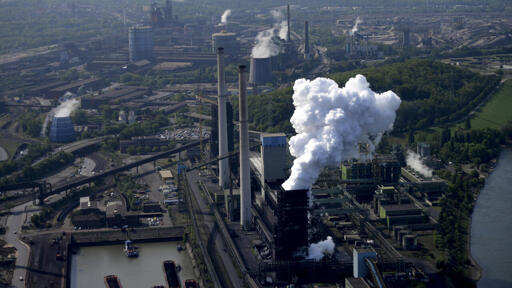There is a similar trend in the Eurozone, the U.S., China, and practically all other larger areas. To provide a broader picture and a bit of a forecast:
-
The HCOB Eurozone Manufacturing PMI was confirmed at 49.8 in July 2025, up from 49.5 in June, marking the slowest contraction in the sector since July 2022 and signaling a move toward stabilization. Output continued to grow, albeit at the weakest pace since March … At the country level, Ireland led euro area manufacturing, while the Netherlands, Spain, and Greece also saw solid growth. Elsewhere, PMI readings improved but remained below the 50.0 threshold … Germany’s PMI reached a near three-year high, while France and Austria recorded the weakest performance in the bloc.
-
The S&P Global US Manufacturing PMI was revised slightly higher to 49.8 in July 2025 from a preliminary estimate of 49.5, but it remained the lowest reading since December and continued to signal deteriorating operating conditions in the US goods-producing sector. Demand stagnated and tariff uncertainty continued to dominate the manufacturing landscape.
-
The Caixin China General Manufacturing PMI fell to 49.5 in July 2025, down from 50.4 in June and below forecasts of 50.2. The latest reading marked the second contraction in factory activity in three months, driven by a sharper decline in new export orders amid global trade uncertainty. Output fell for the second time since October 2023 due to a slowdown in new orders growth. Employment declined, while purchasing activity expanded after falling over the previous two months. Supplier performance continued to deteriorate due to shipment delays and supplier shortages.
You’ll find all other countries at Trading Economics.
[For those who may not know: The PMI - Purchasing Managers Index - is an indicator that measures the activity level of purchasing managers in the manufacturing sector. A reading above 50 indicates expansion in the manufacturing sector, while a reading below 50 suggests contraction. According to Trading Economics macro model, the PMIs of the cited areas/countries and most other regions will be 50.0 or above by the end of the third quarter 2025.]
[Edit to correct a typo.]
Thanks, this is much more insightful than the headlines. If we take PMI as the indicator, then for Germany and the Eurozone it has been bad for last three years, and this year actually have seen an improvement in form of a smaller contraction,
https://tradingeconomics.com/germany/manufacturing-pmi https://tradingeconomics.com/euro-area/manufacturing-pmi
For US and China it looks like within the random range for last three years.
https://tradingeconomics.com/united-states/manufacturing-pmi https://tradingeconomics.com/china/manufacturing-pmi
-
Yeah it’s bad and it’s been bad for a while. I work in a factory with a lot of temporary workers at the moment and they all tell me the same thing. They get booked for a new job, work there for a couple of months and then get fired because production gets relocated East. Sometimes Czechia, sometimes China, anything but Germany. Apparently it’s cheaper to build a new factory and pay the workers the same wage (in the case of Czechia) than to keep things running over here. At least on paper. Of course the last few production steps have to happen here so you can slap a “Made in Germany” sticker on whatever it is so there’s a lot of costly logistics involved too. Idk what it is exactly but it seems like everyone involved except the actual workers is trying their darndest to run German manufacturing into the ground.




